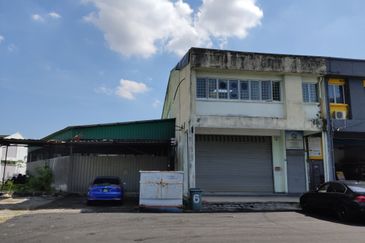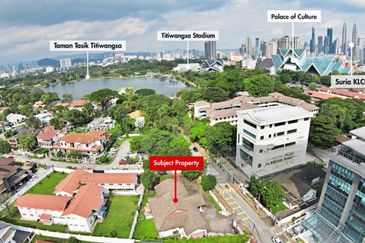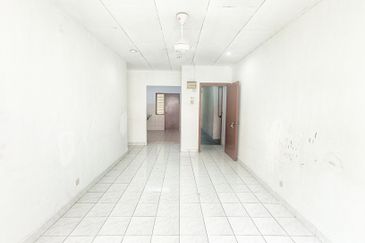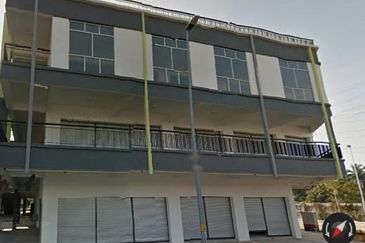
IT is no secret that stratified high-rise buildings are likely to form the bulk of new buildings in the future, especially in the city where land for development is shrinking every day while its population continues to grow.
This changing phenomenon is impacting the way real estate developers are designing and building their projects. It also highlights the growth of the building management industry and the need for such industry services and professionals.
“Stratified buildings will form a majority of buildings in the country soon, maybe up to 70% of all houses built, à la Hong Kong or Singapore. This phenomenon will give rise to a whole new standalone building management industry,” said Building Management Association Malaysia (BMAM) president Tan Sri Eddy Chen during his presentation entitled “Is the devil in the building design?” at TheEdgeProperty.com Symposium on Property Management 2017.
Themed “Is your investment a time bomb?”, the symposium was organised by TheEdgeProperty.com with partners Nippon Paint Malaysia and Panasonic Malaysia on April 8. The event was supported by The Edge Malaysia while the supporting sponsor was Gamuda Land.
Chen predicted that by 2020, there will be potentially one million strata housing units in the country, and as many as five million people will be managed under the Strata Management Act.
However, he stressed that “to manage stratified properties and their residents well, it starts with a well-designed property as it can help to reduce the amount of maintenance while keeping things in proportion and perspective”.
The design of a property, he added, plays a key role in the upkeep of a property and in efforts to maintain its value in the long term.
“From the perspective of the property’s longer-term upkeep and maintenance, generally the issue of sustainability, it is indisputable that design indeed plays the key role. Poorly thought-out designs will inevitably lead to long-term expenditure costs and headaches to both tenants and owners,” Chen noted, adding that the lack of maintenance will also impact the final impairment analysis of the asset’s value.
Have the end in mind
Chen told the audience that the philosophy of “having the end in mind” is very apt when it comes to building design.
“All designers should, before they even put ink on paper, revisit this thought, that you don’t create a devil of the building.”
Although the property’s design will not have a direct impact on the future value of the property, it does have a direct impact on its maintenance cost.
“With a lousy design, there is the increased likelihood that you will end up with higher maintenance, replacement and retrofitting costs. This will eat into the sinking fund. On the other hand, a well-designed building is likely to incur less maintenance cost and, hence, contribute to value enhancement of the life of the building,” he shared.
Chen cited, for example, that the direction of a house could decide its energy cost.
“If your house faces west, the electricity bill will be higher because you may turn on the air-conditioner more often due to the heat from the sun.”
Meanwhile, if the developer puts more effort into the design and avoids building houses that face the east and west directions, it will help future residents to save more on their utility bills,” Chen said.
However, he also noted that there is a constant “clash” between aesthetics and logic in building design, maintenance and management.
“Aesthetics mostly involves external facades and interior designs of a decorative nature, while logic, or what we call functional design, is mostly concerned with the practical upkeep of a building, its facilities and services.
“Quite often, there is too much emphasis on aesthetics in a building’s design rendering the building difficult to maintain and manage. It also makes the building generally less space efficient,” he shared.
Generally, a good design should have sustainable elements such as energy efficiency, use of green materials, recycling of water, good ventilation, and offers enough natural lighting with good shading from direct sunlight.
On top of that, it must be aesthetically pleasing, offer good accessibility, have space for sufficient community interaction and provide sufficient privacy.
“A good building design must incorporate easy accessibility to the car park, lift, common corridors and facilities. On the contrary, a poor design will give rise to stress and at times frustration for those living there,” Chen said.
The new role of a developer
Any misstep in a property’s design will have a long-term impact on the liveability of the home, the ultimate being maintenance cost, inefficient use of space and wastage, hampering movement and as a result impairment on the value of the building.
“As a developer in the industry for the past 30 years, the role of the developer has evolved compared with 10 or 20 years ago. A building is no longer seen as just brick and mortar, but one that provides a wholesome physiological and psychological sense of well-being and security,” said Chen, who is also the managing director of MKH Holdings Bhd.
Chen noted that developers nowadays have more to consider as growing affluence brings greater demands and needs while competition gets stiffer.
“A developer also has to comply with more rules and regulations. The imposition of capital contributions, scarcity of suitable land and hence higher costs post whole new challenges to all developers,” he shared.
Nevertheless, he said developers should not compromise on the quality of design and construction because they contribute to safeguarding the property value and quality of living.
In conclusion, Chen said: “All building starts with design. It cuts across the macro environment to the micro consideration of space, fittings and finishes. As homes are now more of a lifestyle investment, it is the developer’s responsibility to put in greater thought on design and finishings to upkeep the value of the building.”

This story first appeared in TheEdgeProperty.com pullout on April 14, 2017. Download TheEdgeProperty.com pullout here for free.
TOP PICKS BY EDGEPROP

Suria Residence by Sunsuria
Bukit Jelutong, Selangor

Suria Rafflesia
Setia Alam/Alam Nusantara, Selangor

Taman Perindustrian USJ 1
Subang Jaya, Selangor

Taman Perindustrian USJ 1
Subang Jaya, Selangor

Titiwangsa Spacious Single Storey Bungalow For Sale
Titiwangsa, Kuala Lumpur




















